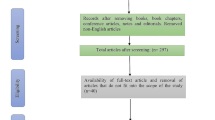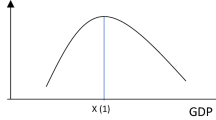Abstract
Traditional opinion considers that natural resources play an important positive role in economic development, while resource curse theory holds that natural resources usually obstruct economic increase. This debate needs further exploration. In most of empirical studies on resource curse theory, the economic development of an area is mainly evaluated by the Gross Domestic Product (GDP), however, the social and cultural contents of economic development are seldom considered. Thus, the Human Developing Index (HDI) was chosen to describe the comprehensive developing situation of an area in our study. Based on the panel data from the year of 2000 to 2011, the relationship between Human Developing Index and resource exploitation degree (RED) of 30 provinces in China (Tibet, Taiwan, Hong Kong and Macao were not included because of the restriction of data acquisition) was investigated by correlation coefficient analysis and regression analysis. We found that resource curse did exist over the entire country and its effect on 30 provinces were not exactly the same. According to the effects of resource curse, these provinces could be classified into four types: no resource curse provinces, slight resource curse provinces, severe resource curse provinces, and extreme resource curse provinces. Testing from two short time periods 2000–2005, and 2006–2011, the resource curse effect was not prominent. However, testing from the entire period of 2000–2011, the effect was obvious among each province.
Similar content being viewed by others
References
Alxeev A, Cornad R, 2009. The elusive curse of oil. The Review of Economics and Statistics, 91(3): 586–598. doi: 10.1162/rest.91.3.586
Auty R M, 1994. Industry policy reform in six large newly industrializing countries: The resource curse thesis. World Development, 22: 11–26. doi: 10.1016/0305-750X(94)90165-1
Cao Shixiong, Li Shurong, Ma Hua et al., 2014. Escaping the resource curse in China. AMBIO, 42(7): 217–228. doi: 10.1007/s13280-014-0540-9
Chen Shengku, Xu Zengrang, Shen Lei, 2008. Spatial-temporal process and driving force of interprovincial coal flowing in China. Acta Geographica Sinica, 63(6): 603–612. (in Chinese)
Gylfason T, Herbertsson T, Zoega G, 1999. A mixed blessing: Natural resources and economic growth. Macroeconomic Dynamics, 3: 204–225. doi: 10.4337/9781848442818.00075
Herrero, Carmen, Ricardo Martinnez, 2012. A newer human development index. Journal of Human Development and Capabilities, 13(2): 247–268. doi: 10.1080/19452829.2011.645027
Hu Yuancheng, Xiao Deyong, 2007. The threshold of economic growth and the natural resource curse. Management World, 4: 15–23. (in Chinese)
Lear S, 2005. Resource concerns for territorial conflict. Geo-Journal, 64(4): 297–306. doi: 10.1007/s10708-005-5808-y
Lu Kangqiang, 2012. Component equilibrium: An improved composite method and its empirical test for HDI. Statistical Research, 29(10): 45–51. (in Chinese)
Murphy K, Schleifer A, Vishny R, 1991. The allocation of talent: Implications for growth. Quarterly Journal of Economics, 106(2): 503–530. doi: 10.2307/2937945
National Bureau of Statistics of China, 2001–2012. China Statistical Yearbook. Beijing: China Statistics Press. (in Chinese)
Papyrakis E, Gerlagh R, 2004. The resource curse hypothesis and its transmission channels. Journal of Comparative Economics, 32(1): 181–193. doi: 10.1016/j.jce.2003.11.002
Perkins D H, Gillis M, 1996. Economics of Development. New York: W.W. Norton, 450–462
Qi Yijun, Fu Guijun, 2012. Research on the Inner Mongolia mode to resolve resource curse, Heilongjiang National Series, 127(2): 90–96. (in Chinese)
Robinson J, Torvik R, Verdier T, 2006. Political foundations of the resource curse. Journal of Development Economics, 79(2): 447–468. doi: 10.1016/j.jdeveco.2006.01.008
Rodriguez F, Sachs D, 1999. Why do resource-abundant economies grow more slowly? Journal of Economic Growth, 9(3): 277–303. doi: 10.1023/A:1009876618968
Sachs D, Warner M, 2001. The Curse of natural resources. European Economic Review, 45(4–6): 827–838. doi: 10.1016/S0014-2921(01)00125-8
Stijns J, 2006. Natural resource abundance and human capital accumulation. World Development, 34(6): 1060–1083. doi: 10.1016/j.worlddev.2005.11.005
Wang Zhongya, 2011. Empirical study on resource curse transmission mechanism of resource-based cities. Urban Studies, 18(11): 85–89. (in Chinese)
Wilson S, 2013. Diamond exploitation in Sierra Leone 1930 to 2010: A resource curse?. GeoJournal, 78(6): 997–1012. doi: 10.1007/s10708-013-9474-1
Xu Kangning, Wang Jian, 2006. An empirical study of a linkage between natural resource abundance and economic development. Economy Study, 1: 78–89. (in Chinese)
Xu Qiang, 1996. The environmental problems and countermeasures of mineral resources utilization in China. Chinese Geographical Science, 6(2): 97–103. doi: 10.1007/BF02683543
Yang Yu, Zhang Xiaolei, Lei Jun et al., 2010. Sustainable regional development based on resources exploitation and utilization. Scientia Geographica Sinica, 30(3): 363–369. (in Chinese)
Yao Yulong, Zhou Hong, Gu Shuzhong, 2011. On regional difference and drivers of natural resources curse in China. Resources Science, 33(1): 18–24. (in Chinese)
Zhang Lei, 1997. Mineral life-circle curve and its implication in regional development. Acta Geopraphica Sinica, 52(6): 500–506. (in Chinese)
Zhang Gongsheng, Tian Wanhui, 2010. Examination on the resource curse thesis: Perspective based on the natural resource category. Journal of Capital University of Economics and Business, 3: 116–122. (in Chinese)
Author information
Authors and Affiliations
Corresponding author
Additional information
Foundation item: Under the auspices of Specialized Research Fund for Doctoral Program of Higher Education of China (No. 20120043110012), Fundamental Research Funds for Central Universities (No. 12SSXT109)
Rights and permissions
About this article
Cite this article
Huang, Y., Fang, Y., Zhang, Y. et al. A study of resource curse effect of Chinese provinces based on Human Developing Index. Chin. Geogr. Sci. 24, 732–739 (2014). https://doi.org/10.1007/s11769-014-0727-9
Received:
Accepted:
Published:
Issue Date:
DOI: https://doi.org/10.1007/s11769-014-0727-9




